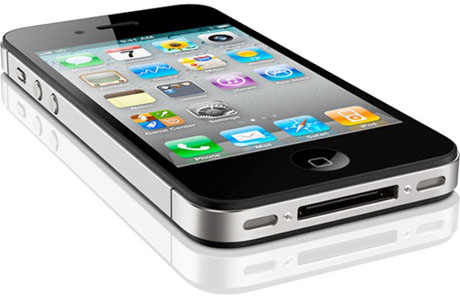ATLANTA - Using two-way video on the iPhone 4 could help doctors assess the severity of a patient’s stroke symptoms, according to an Emory University study recently published in the Journal of Stroke and Cerebrovascular Diseases.
“This is the first study to demonstrate reliable stroke assessment using the iPhone 4,” says principal investigator Eric R. Anderson MD, PhD, a third-year neurology resident at Emory University School of Medicine.
“During a stroke there is a critical window of time to save the brain and every minute counts,” explains Anderson. “Effective treatment involves a timely and coordinated approach led by a neurologist specifically trained in all facets of acute stroke care.”
Anderson and his colleagues came up with the idea to use Apple’s innovative FaceTime software as a quick and economical solution to diagnose stroke from a distance.
The study included 20 patients - nine men and 11 women - who were admitted to Grady Memorial Hospital for acute stroke. All of the patients underwent evaluation by a physician at the bedside, who was being directed remotely by another physician via the iPhone 4. Each physician calculated a score using the National Institutes of Health Stroke Scale and found there was excellent agreement in total scores between them on ten items included in the scale.
“A person who is experiencing stroke symptoms and seeks care at a medical facility that does not offer acute stroke care should be able to be connected via the iPhone 4 with stroke specialists at another location who can see them with FaceTime video and assess their condition,” says Anderson.
“It’s as if the neurologist is at the patient’s bedside examining them. It offers an easy to use, effective way of transmitting audio-visual information, much less expensive than current telemedicine solutions.”
Current telemedicine technology allows stroke specialists to extend care to rural areas. Using Web-based computer cameras and screens outfitted with specialized tools that send and receive live video and real-time medical information, these neurologists are able to see and examine stroke patients to determine if they are candidates for rt-PA, a clot busting drug often used to treat stroke.
But these telemedicine strategies are very expensive and often unaffordable in areas where they are needed most, explains Anderson. He is part of Emory’s multi-disciplinary team led by Michael R. Frankel, MD, professor of neurology, Emory University School of Medicine, chief of neurology and director of the Marcus Stroke & Neuroscience Center at Grady Memorial Hospital.
Frankel’s team pioneered rt-PA or recombinant tissueasminogen activator, the only clot busting medication approved by the U.S. Food and Drug Administration for the acute treatment of ischemic stroke. It has been proven to significantly reduce disability from stroke - but in rural hospitals this life saving treatment is often underused due to a lack of stroke expertise.
“Physicians without experience in acute stroke are not comfortable using the medicine because it can have serious side effects in patients who are not correct candidates,” says Anderson.
“Additionally, it has been shown that in hospitals that treat fewer than five acute strokes with rt-PA a year, the morbidity and mortality is much higher compared to those that treat more. This shows that the timely expertise of the stroke neurologist is essential in the management and treatment of acute ischemic stroke patients with rt-PA.”
Strokes are the leading cause of long-term disability in the United States. Nearly every 45 seconds someone suffers a stroke or "brain attack," when blood flow to the brain is interrupted. Within just minutes millions of brain cells die.
For the full version of the study, please visit: http://www.sciencedirect.com/science/article/pii/S1052305711002552
Reference: Journal of Stroke and Cerebrovascular Diseases. Anderson E, et al "Remote assessment of stroke using the iPhone 4" J Stroke Cerebrovasc Dis 2011; DOI: 10.1016/j.jstrokecerebrovasdis.2011.09.013.

